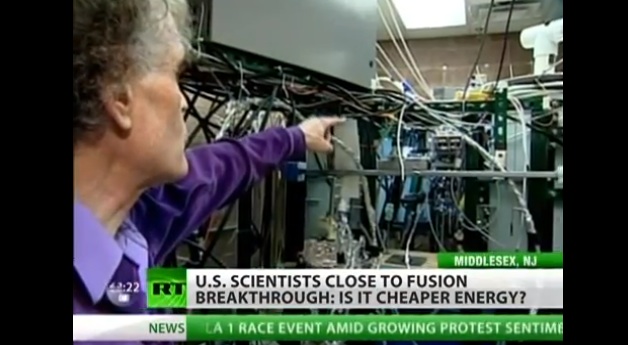Novel nuclear reactors atop MIT energy contest finalists


Electric power utilities are the single biggest contributor to the world's CO2 emissions, so the Massachusetts Institute of Technology is rounding up the best ideas on how to counter that.
In a contest for which public voting ends tomorrow (Aug. 31), the answer that has come back so far is: Build novel nuclear reactors.
Nuclear fusion and "fast" reactors are currently the two top contenders in a competition run by MIT's Climate CoLab group, with fast reactors the leading vote-getter to date.
A plan to scrub CO2 from fossil fuel plant emissions is a distant third.
Entrants included ideas for solar, wind, smart grid technology, fees for carbon emissions and others. One submission even called for buying up and closing down the coal industry.
The fast reactor proposal notes that the Integral Fast Reactor (IFR) can consume its own waste as fuel and thus solves the problem of what to do with nuclear waste. Fast reactors can also burn waste from today's conventional reactors, which slow down neutrons rather than allowing them to run fast. (The slow down helps assure reactions take place but leaves a lot of waste and is much less efficient than a fast reaction). The U.S. abandoned fast reactors in 1994. Russia and China are developing them. So is Bill Gates.
The fusion proposal pulls together the separate initiatives of several small companies that are developing fusion machines that deploy fusion technologies different from the massive government backed projects like the ITER tokamak in France and the National Ignition Facility in California.
It calls for funding for these smaller projects, which it says could crack the fusion challenge sooner than could the behemoths. Fusion promises abundant, safe and clean energy, but since its conception in the 1950s, no one has succeeded at building a machine that steadily delivers more energy than it consumes.
The fusion companies include those I've written about on SmartPlanet: Lawrenceville Plasma Physics, Tri-Alpha, General Fusion, Helion, Lockheed Martin as well as the Polywell design, MIT's Levitated Dipole and Sandia Natioanl Laboratory's MagLIF.
The public can vote here. A panel of judges will also help determine the winner. The MIT contest looks at 17 other sectors in addition to electric power. The full list is here.
Photo is a screen grab from Lawrenceville Plasma Physics video via YouTube
More on fast reactors:
- Bill Gates stops chasing nuclear 'wave', pursues variety of reactor types
- Russia plowing $32 billion into nuclear over next two years
- Grandfather of global warming fight: Nuclear power saves millions of lives
- Lights! Camera! Atoms! Sundance to debut pro-nuclear film
- Virgin Nuclear? Branson asks Obama for reactor help. Sir Richard v Bill Gates?
And fusion:
- New Jersey firm claims nuclear fusion triumph
- The secret U.S.-Russian nuclear fusion project
- To Mars in 30 days, on nuclear fusion
- Nuclear fusion from Google, Lockheed, Draper Fisher
- New Jersey nuclear fusion firm ratchets up Iranian collaboration
- Joint U.S., Iranian nuclear peace plan hatches
- Fusion breakthrough
- Brits double down on fusion
- The world’s largest solar plant
All sorts of alternative nuclear stories here, including thorium, molten salt, pebble beds, fast reactors, modular reactors, fusion and more.
This post was originally published on Smartplanet.com